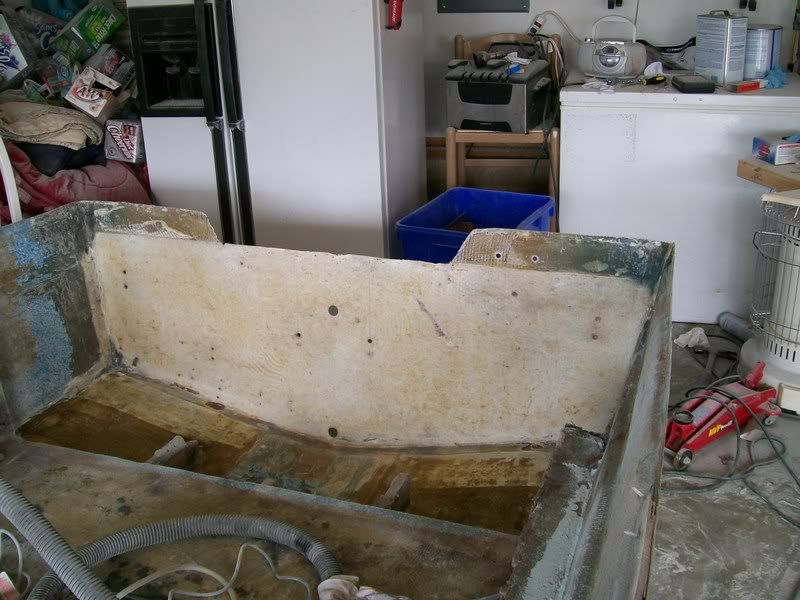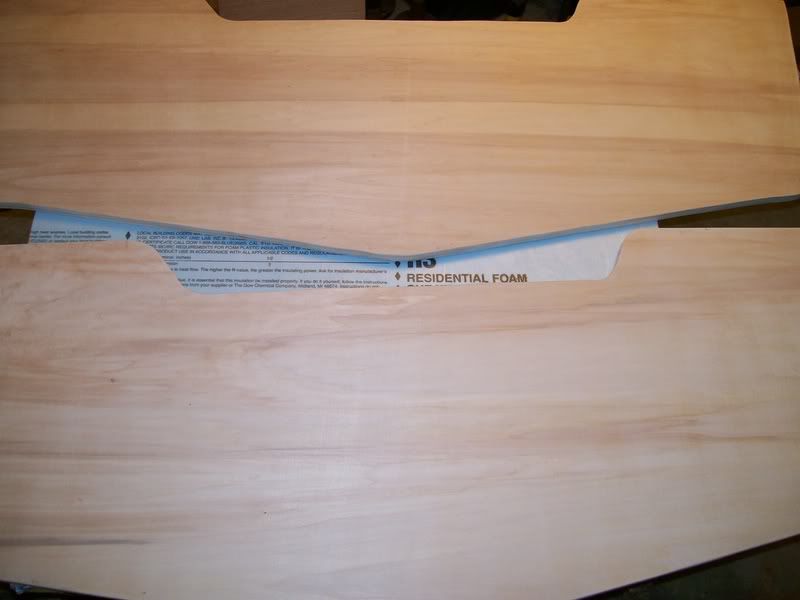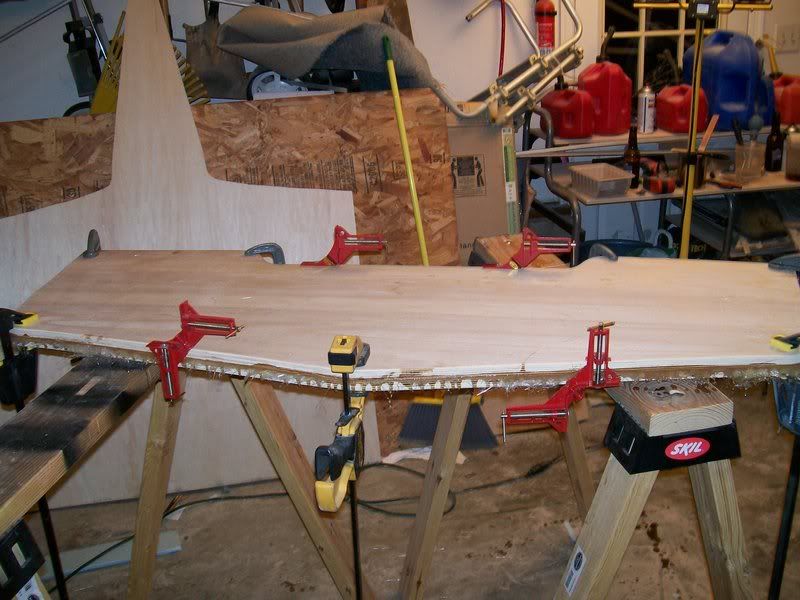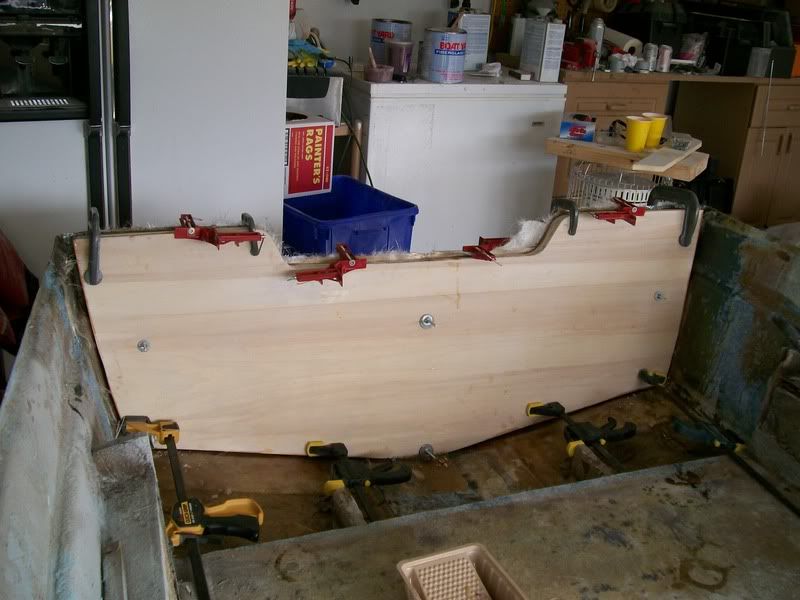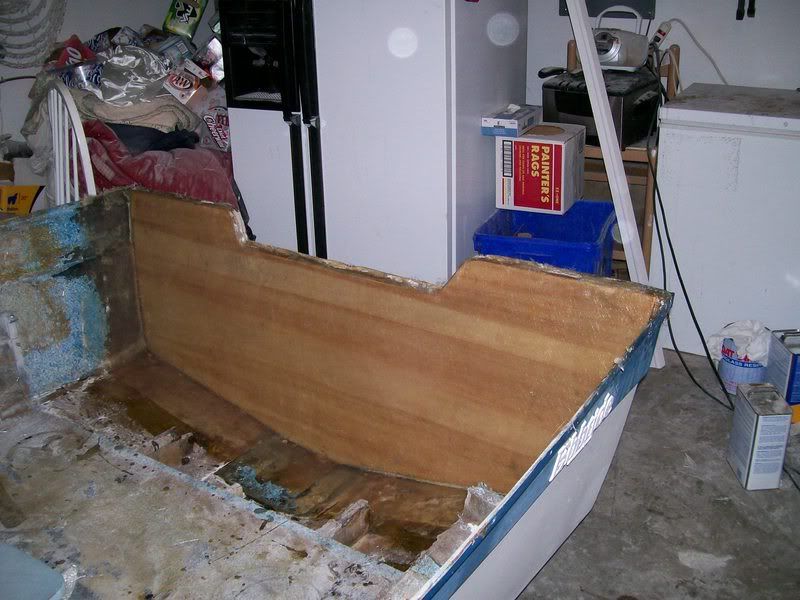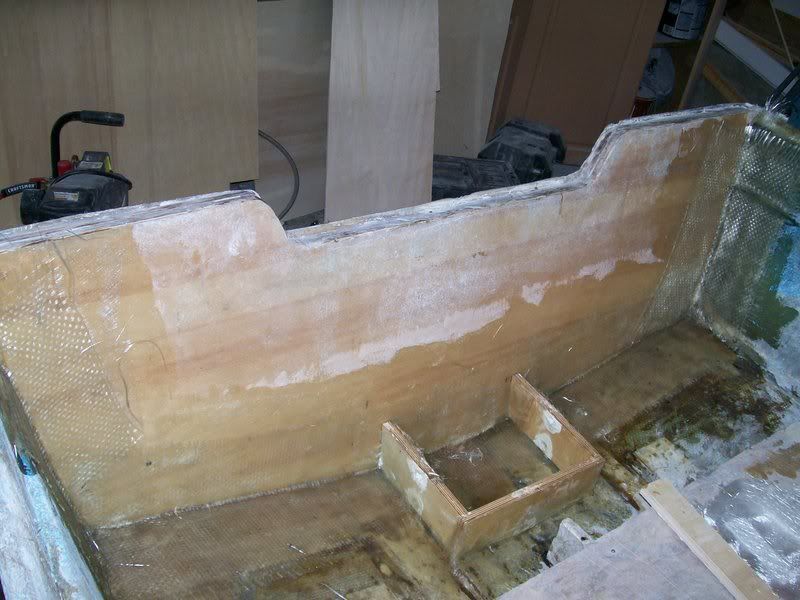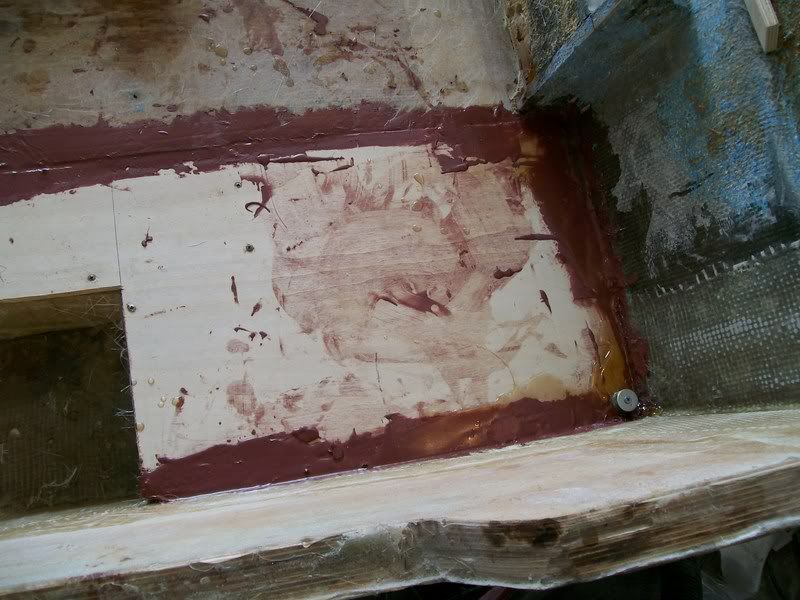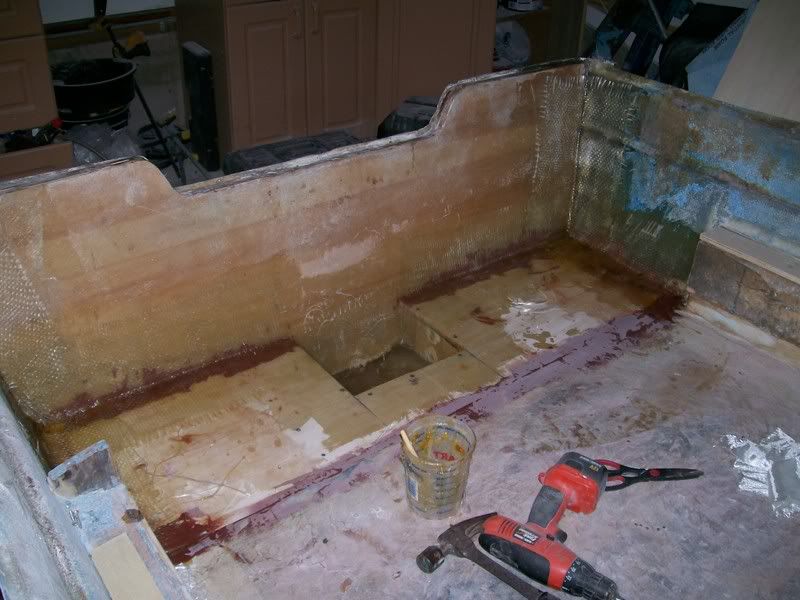Re: Seacast or Plywood Seeking advice???
Keep the back shell on. That way the original transom angle will be preserved.
Here are some steps you should take
1. Measure the dimensions of your bilge cavity. Then, take a circular saw, set your depth to 5/8" and cut out the splashwell area of floor (approx 2ft). This will give you a good opportunity to see what kind of shape the floor and stringers are in. If they are shot as well then replace the stringers and floor before proceeding to the next step. You want to leave the deck section intact while replacing the floor. (If you replace the floor with the deck off, you may flex the hull out to where the deck won't go back on. I digress. If the floor and stringers are shot, post a reply and we'll deal with that.
2. Remove the rub rail and then aluminum extrusion.
3. Separate the deck and hull sections. It may take some mallet tapping and prying but they should separate easily. Now you can get out that old transom.
4. Get an exact width of the old transom. This is important when you go to put the deck back on (too thick and the deck won't fit.)
4. Remove the old transom plywood. a wonder bar is good if the transom is really rotted, if the wood is somewhat intact, use a chainsaw by driving the tip in from the top.
5. Grind all of the old wood out on the inner skin. It should look something like this.
6. Then make a pattern of your transom. I used some exterior housing styrofoam. It was easy to cut with a razor knife and trim and was rigid enough to keep in place.
7. You need to determine what type of plywood to use. You can use marine grade but it is $$$$$$$. I used ACX grade. I paid 59.99 for a 4x8x3/4". It has very few voids and was pretty much flawless. You'll probably have to hit the local lumberyard as I don't think Lowe's or Home Depot carry this quality of plywood. I wouldn't go any lower in quality than ACX.
You then want to cut out two identical transom pieces that fit your pattern.
8. Make a transom sandwich with plywood and resin/chopped fiberglass mat. You have to choose what type of resin to use. Epoxy or Polyester. Epoxy by far is better, but it is way more expensive. Epoxy is more waterproof and it will adhere to anything. I used polyester because of the amount of resin I needed for the whole project, plus my boat will be trailered and garage kept. Using epoxy you wouldn't use the mat (unless it is the special epoxy mat) because mat requires styrene to dissolve. Look for other posts for working with epoxy resin if that is the route you choose.
You will want to clamp the two pieces together and put in SS screws to hold it together
Let this cure for 24/48hrs.
9. Install your new transom against the outer skin using Resin/chopped mat. Again clamp it at the top with C-clamps and I used spreader clamps at the bottom and also drilled a few thru-hulls where the drain and bow eyes are and put in some machine screws with washers and cranked them up good and tight. The goal here is to fill any voids completely with resin and leave no pockets where water can get in.
Again, let this cure.


























